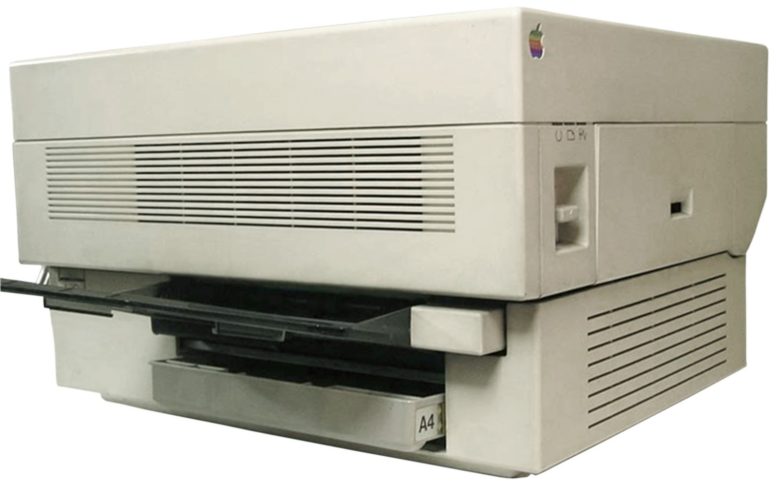 January 23, 1985: Apple introduces The Macintosh Office, a combination of hardware and software that represents the company’s first real attempt at cracking the business market dominated by IBM.
January 23, 1985: Apple introduces The Macintosh Office, a combination of hardware and software that represents the company’s first real attempt at cracking the business market dominated by IBM.
Macintosh Office allows Macs to talk to one another. And Apple introduces amazing new devices like the LaserWriter printer that work with the business-oriented platform. Sadly, things won’t work out quite as Apple hopes.
The Macintosh Office: Personal computers come of age
The need for Macintosh Office speaks volumes about the way the personal computer world evolved during its first decade.
When hobbyist machines like the Altair and, later, the Apple II, began shipping in the mid-1970s, few people seriously thought personal computers deserved a place in the business world. Machines aimed at home tinkerers, these early personal computers held little appeal for people working in big companies who had access to IBM mainframes.
By the early 1980s, however, things had changed. IBM entered the PC market. And software like the Apple II’s “killer app” VisiCalc showed that personal computers served a very different — but still important — purpose.
Slow start for the Macintosh
The Macintosh took personal computers one step further. But despite the buzz the Mac created, sales proved disappointing. One year in, Apple had only sold 250,000 Macs. Worse yet, developers often overlooked Apple’s computer because of its relatively small reach.
Macintosh Office was an attempt to change that. On January 23, 1985, Apple announced the AppleTalk Personal Network and LaserWriter printer, the first of numerous products that (the company promised) would fall under the Macintosh Office brand.
Costing $50 per connection, AppleTalk allowed Macs to share peripheral devices. It let up to 32 computers and peripherals talk to one another within work areas of 1,000 feet.
LaserWriter launches desktop publishing revolution

Photo: AppleTimeline
This connectivity, in theory, would make it feasible for Apple to produce Macintosh Office products like the $6,995 LaserWriter (the equivalent of $19,940 today), with the rationale that dividing that cost among multiple users would make it a far more attractive option. Apple promised that the LaserWriter would be the first of many great products that would be similarly shareable among large groups of users.
Aside from being a (relatively) super-fast laser printer in an age of dot-matrix printers, the LaserWriter allowed users to print exactly what they saw on their screens. This was a massive breakthrough in 1985. And the LaserWriter worked well alongside Aldus’ PageMaker, early desktop publishing software that appeared at the same time.
Finally, Apple announced that Macintosh Office also would include a file server, with 20MB-to-40MB capacities. It would allow files and emails to be transferred among Macs.
So did Macintosh Office work?
To owners of personal computers in the 1980s, all of this sounded astonishingly futuristic. To put things in perspective, the Mac offered a crazily ahead-of-its-time graphical user interface. With the Macintosh Office, these computers could talk to one another and even share similarly advanced hardware peripherals. (Remember, Wi-Fi didn’t exist at the time.)
All these technological advances enabled a version of Steve Jobs’ later “digital hub” strategy.
However, things did not pan out quite as planned. AppleTalk promised the capability to connect machines without the need for a centralized router or server. Mac users could easily set up a network and then maintain it without much difficulty. Unfortunately, AppleTalk’s transfer speeds were very, very slow — about 1/10th the Ethernet speeds developed at Xerox PARC in the 1970s.
Apple also failed to achieve the type of success with the LaserWriter that would let the company launch a slew of other high-cost, high-end shareable hardware accessories. (However, Apple did release a LaserWriter II in 1988.)
Additionally, the file network suffered from big delays. (It didn’t ship for several years after Cupertino’s announcement.)
Last but not least, Apple launched Macintosh Office with the disastrous “Lemmings” ad. That unfortunate followup to the fantastic “1984” Macintosh ad lent the stench of failure to a project that doesn’t deserve to be remembered like that. Particularly since it helped launch the desktop publishing revolution.
Did you use the Macintosh Office?
Do you remember the Macintosh Office? Were you running a company with Macs, or working on them in a business capacity, in the mid-1980s? Leave a comment below.


